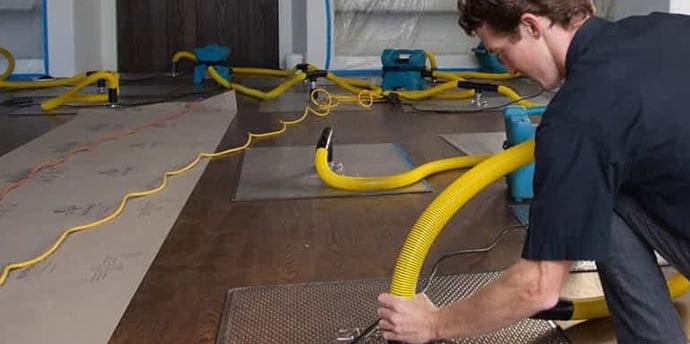Navigating the Deluge: A Comprehensive Guide to Emergency Water Damage Response
Emergency Water Damage Response
11/28/20233 min read


Introduction:
Water damage is an unwelcome and often unpredictable event that can strike homes and businesses, causing chaos and stress. A swift and effective emergency response is paramount to mitigating further damage and restoring normalcy. In this comprehensive guide, we'll explore the essential components of emergency water damage response, providing valuable insights for homeowners and property managers facing the challenges of unexpected water incursions.
Section 1: The Urgency of Emergency Response
1.1 Rapid Mitigation
The first hours following water damage are critical. Rapid response is essential to mitigate the extent of damage, prevent mold growth, and salvage as much of the property as possible.
1.2 Health and Safety Concerns
Water damage can pose immediate health and safety risks. Contaminated water, electrical hazards, and structural instability are common concerns that require prompt attention during the emergency response.
Section 2: Immediate Action Steps
2.1 Safety First
Before anything else, prioritize safety. Turn off electricity and gas to prevent accidents. Wear appropriate personal protective equipment, including gloves, masks, and boots, to guard against contaminants in the water.
2.2 Identify and Stop the Source
Determine the source of the water damage and take steps to stop it if possible. Whether it's a burst pipe, leaking roof, or flooding, addressing the source is crucial to preventing further damage.
2.3 Document the Damage
Start documenting the damage for insurance purposes. Take photographs and videos of the affected areas before any cleanup or restoration work begins. Thorough documentation helps in filing accurate insurance claims.
Section 3: Emergency Water Extraction
3.1 Rapid Water Removal
Swift water extraction is the cornerstone of emergency response. Utilize pumps, wet/dry vacuums, and other water extraction equipment to remove standing water promptly. The goal is to prevent further damage and prepare the space for the drying process.
3.2 Prioritize High-Risk Areas
Focus on extracting water from high-risk areas first, such as basements or areas with electrical systems. This prioritization minimizes potential hazards and accelerates the overall restoration process.
Section 4: Establishing Initial Drying Procedures
4.1 Ventilation and Airflow
Promote ventilation and airflow to initiate the drying process. Open windows, doors, and use fans to increase air circulation. This helps reduce humidity and encourages faster evaporation.
4.2 Remove Damaged Materials
Identify and remove irreparably damaged materials like soaked carpets, insulation, and wet drywall. Removing these materials prevents mold growth and allows for a more effective drying process.
Section 5: Assessing the Extent of Damage
5.1 Professional Inspection
Engage the services of a water damage restoration professional for a comprehensive inspection. Professionals use specialized tools to assess the extent of damage, including moisture meters and thermal imaging cameras.
5.2 Categorizing Water Damage
Categorize water damage based on industry standards (clean water, grey water, black water). Different categories require specific protocols for safe and effective cleanup.
Section 6: Communication and Coordination
6.1 Notify Insurance Company
Contact your insurance company as soon as possible to initiate the claims process. Provide them with the documentation and information gathered during the initial stages of the emergency response.
6.2 Coordination with Restoration Professionals
Coordinate with water damage restoration professionals to ensure a seamless transition from emergency response to comprehensive restoration. Restoration specialists can provide expertise and guide the next steps in the process.
Section 7: Advanced Monitoring Systems
7.1 Remote Monitoring
Incorporate advanced monitoring systems that allow for real-time tracking of moisture levels, temperature, and humidity. These systems provide valuable data for adjusting the drying process and ensuring optimal conditions for restoration.
7.2 Telemetry for Data-Driven Decision Making
Telemetry technology enables data-driven decision-making during the emergency response. By analyzing real-time data, restoration professionals can make informed adjustments to the restoration plan.
Section 8: Containment Strategies
8.1 Creating Containment Barriers
Implement containment strategies to prevent the spread of water and contaminants. This may involve using plastic sheeting and negative air pressure to isolate affected areas and protect unaffected spaces.
8.2 Air Quality Control
Employ air quality control measures to minimize the risk of airborne contaminants. This is particularly important when dealing with grey or black water damage, as it helps prevent the spread of harmful microorganisms.
Section 9: Professional Expertise and Training
9.1 Certified Water Damage Restoration Specialists
Engage certified water damage restoration specialists for their expertise and training. Professionals possess the knowledge and equipment to handle emergencies efficiently, ensuring a thorough and effective response.
9.2 Tailored Restoration Plans
Professionals develop tailored restoration plans based on the specific circumstances of each water damage incident. This personalized approach ensures that emergency response efforts seamlessly transition into a comprehensive restoration strategy.
Conclusion:
A well-executed emergency water damage response is the foundation for successful restoration. By acting swiftly, prioritizing safety, and engaging professional expertise, homeowners and property managers can minimize the impact of water damage and set the stage for a thorough restoration process. Remember, every minute counts in an emergency, and a proactive response can make a significant difference in the overall outcome of the restoration efforts.
A-Z Dryout
3260 N Hayden Rd STE 210 Scottsdale. Arizona 85251
(480) 617-0978
azdryout@gmail.com
